Heiva I Hawaii continues today at Hale Halawai
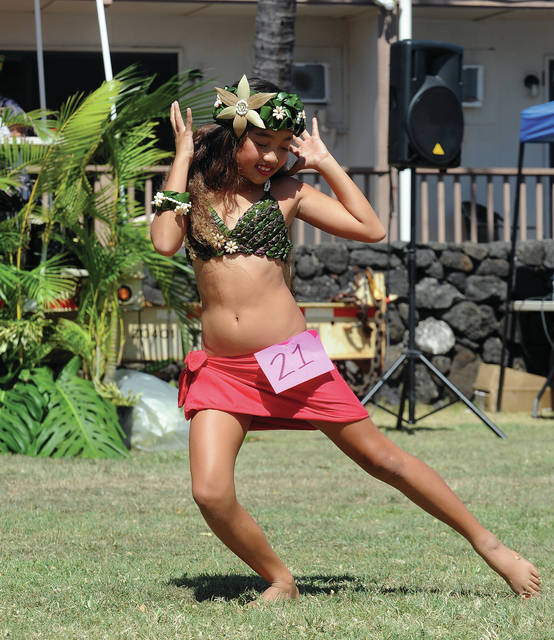

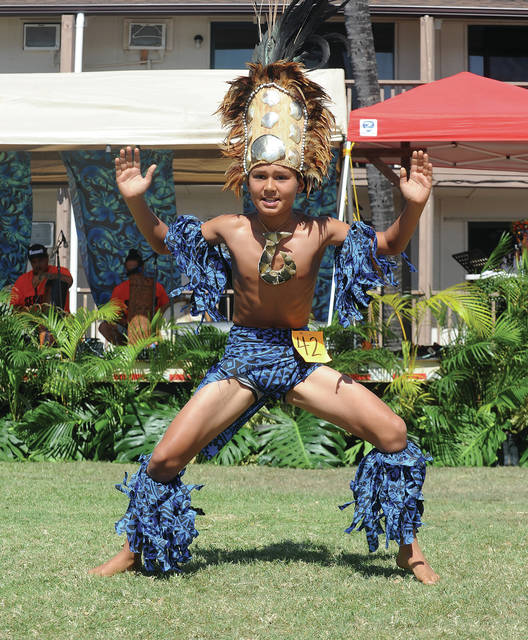
Maviri Gauthier, left, and Nalei Ho dance at the Heiva Hawaii Tahitian Dance Competition Saturday at Hale Halawai. (Photos by Laura Ruminski/West Hawaii Today)
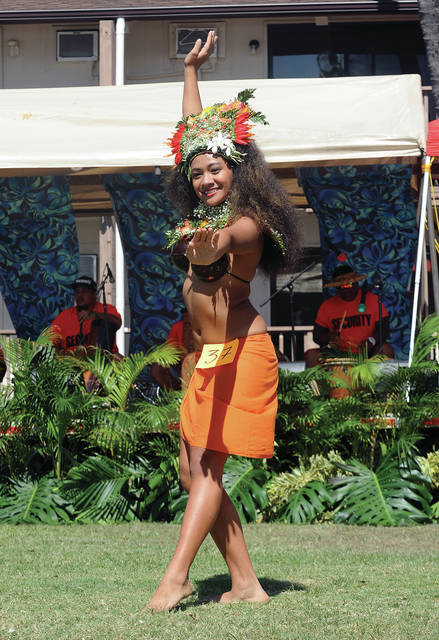
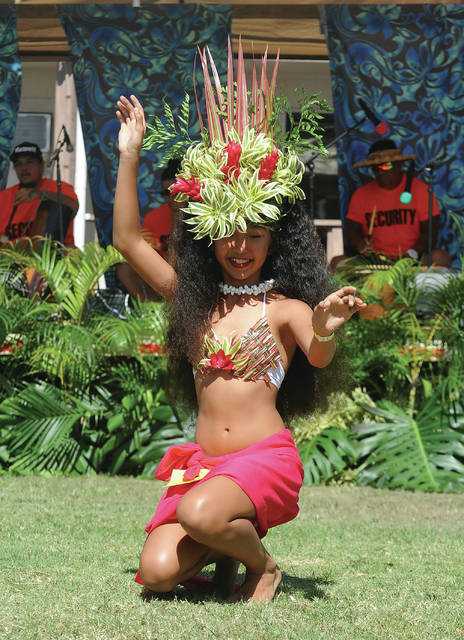
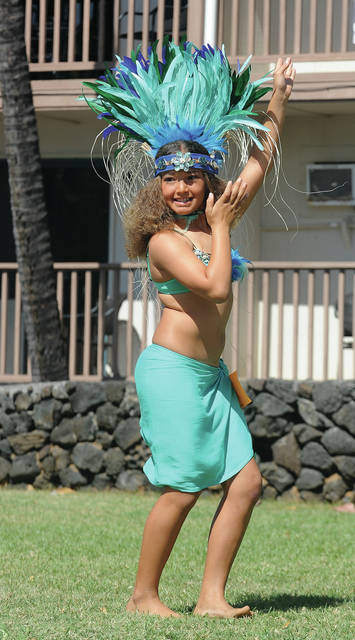
Nalei Ho dances in the Tamahine 11-13 division at Heiva Hawaii Tahitian Dance Competition Saturday at Hale Halawai. (Laura Ruminski/West Hawaii Today)
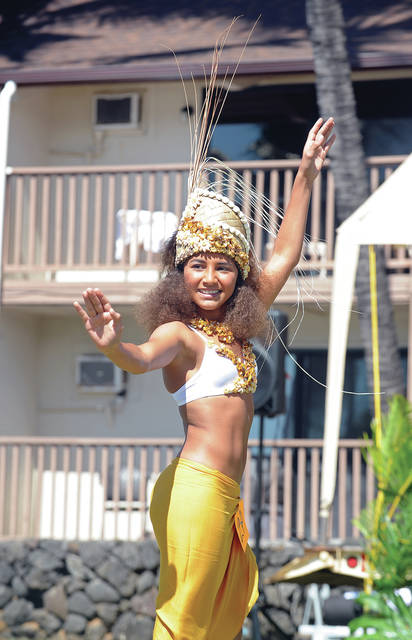
KAILUA-KONA One of Naone Lee-Tolentinos earliest memories is performing Tahitian dance at a competition on Oahu when he was about 5 years old.
KAILUA-KONA — One of Naone Lee-Tolentino’s earliest memories is performing Tahitian dance at a competition on Oahu when he was about 5 years old.
He’s been doing Tahitian dance since he was 2, and on Saturday, Lee-Tolentino, now 14, was preparing to perform in the senior division at the eighth annual Heiva I Hawaii Tahitian Dance Competition this weekend.
“When I get on there, I’m nervous, and I’m thinking too much of what am I going to do on stage,” he said Saturday prior to dancing. “But once the drums start, I just let go and I just let my hands do what they want, let my feet move where they want to go.”
Lee-Tolentino, also identified as Ruutia Tolentino in a program for the event, was named “Mr. Heiva 2019,” and said he’s participated in the event every year since it began.
He said he likes the competition aspect of the event, saying he enjoys competing against others and testing his abilities in Tahitian dance and also supporting the others he knows competing.
“And it’s also a chance to me to hang out with my friends,” he said. “We all have this one mind set or goal: to win.”
Ha’ena Keawekane, named “Miss Heiva 2019,” said she’s been dancing since she was three, with early memories of practicing at Pahoehoe Park.
“It’s like an escape, honestly,” said Keawekane, 19. “When I dance, it’s like I feel like I’m expressing myself, and it’s indescribable.”
Saturday featured round after round of dancers, performing for scores of attendees.
Coordinator Crystal Mather said dozens of dancers would be competing throughout the weekend.
“People just love it,” she said. “They see it and they’re just amazed to see all the people here, how small they start to how old they are.”
The youngest dancers are about three, she said, while the oldest are 40 and over.
The event continues today at Hale Halawai starting at 10 a.m. and after it finishes, Mather said, she hopes those who came to compete will keep on dancing in the future.
“It’s kind of like a sport, playing soccer or baseball. It kind of keeps them busy, stay out of trouble,” she said. “And that’s what we need here in this town.”
And as competitors danced to the rhythm of the pahu, toere and faakete behind them, Camelia Temanaha, head judge, watched them from a table in front. She’s danced all her life, she said during a break on Saturday, and said that while there are some differences between Tahitian dance and hula, the core of it — storytelling through dance — is the same.
Temanaha said competitors were being judged based on their technical ability, such as their knowledge and execution of particular steps as well as their stamina, as well as their creativity and expression in addition to their costume.
Having danced all her life, she said she enjoys seeing young children take to Tahitian dance so passionately.
“It reminds me of myself,” she said, “and it’s so nice to know these kids love dancing and love to dance my culture.”
Temanaha said that it’s critical that dancers not just know the steps, but are also sincere in their own pursuit of excelling at Tahitian dance. And as a judge, she said, she can sense whether or not a competitor is sincerely passionate about their dancing.
“It has to come from them — of course their parent can put some push, once they go into it, maybe then, they want more,” she said. “But when they say ‘I want to dance,’ these kids going to be far. They’re going to be so good.”
Lee-Tolentino said he’s got a strong interest in seeing the culture and performance of Tahitian dance live on through those younger than him. It makes him happy, he said, to see his younger brothers dance, saying he encourages them and helps them along.
The youngest of his brothers are 5 and 6, he said, and are just getting started with Tahitian dance.
“It just reminds me of how I started out,” he said, “and how it happened for me.”


